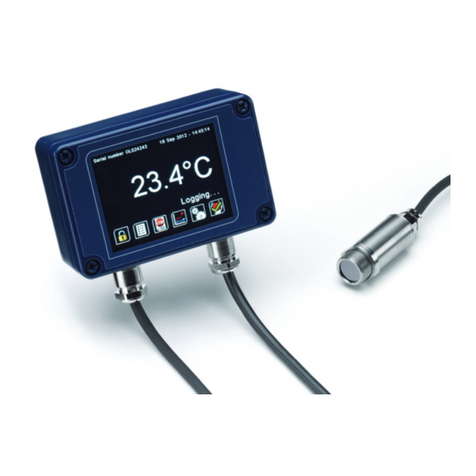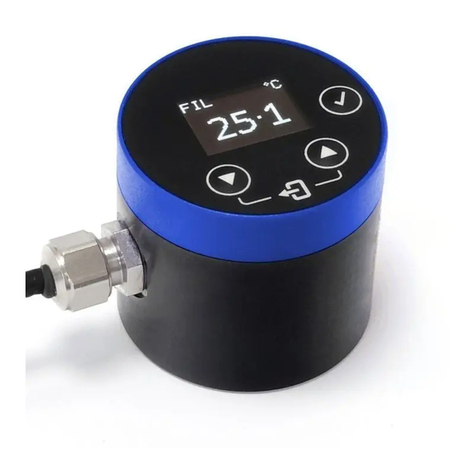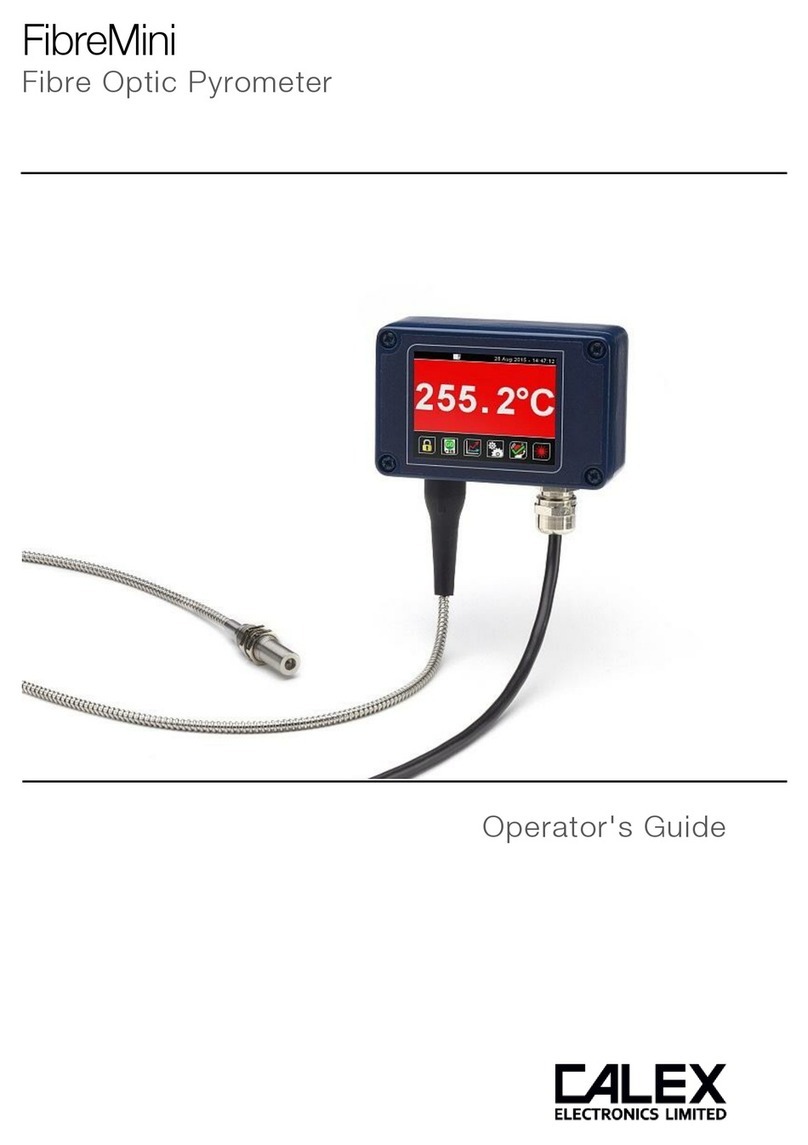2
INTRODUCTION
ExTemp intrinsically safe non-contact infrared temperature sensors measure the temperature
of an area of the surface of a solid or liquid, and transmit this as a two-wire, linear 4-20 mA
output.
Temperature ranges from -20°C to 1000°C are available. All models have an adjustable
emissivity setting, and may be used to measure a wide variety of target materials, including
food, paper, textiles, plastics, leather, tobacco, pharmaceuticals, chemicals, rubber, coal,
asphalt and paint.
A choice of precision optics is available to measure small or large targets at short or long
distances.
The optional LCT Loop Configuration Tool (USB adapter) and free software allow the
ExTemp to be connected to a PC for temperature indication, sensor configuration and data
acquisition.
These sensors are designed primarily for use in hazardous areas in conjunction with a
suitable safety barrier or isolator. All models have been certified Intrinsically Safe for use
in gas and dust hazardous areas by Certification Management Ltd. They comply with the
European ATEX Directive 2014/14/EU and are covered by certificates for IECEx (international)
and TIIS (Japan).
IMPORTANT INFORMATION FOR USE:
Voltage MUST be supplied by a suitably rated safety barrier or isolator.
For re-configuration of the sensor, the LCT MUST be connected in the safe area, behind the
protection of a safety barrier or isolator.
The ExTemp dust certification relies upon the ingress protection provided by the device
enclosure and therefore the device MUST NOT be opened. Care should be taken to avoid
inadvertently loosening the cable gland when tightening locknuts.
Do not attempt to repair a faulty unit. Contact the vendor to arrange a return.
CONFORMANCE TO REQUIREMENTS
This product has passed a high voltage withstand test up to 700 VDC.
This product utilises the reduced creepage and clearance distances of ANNEX F by meeting
the requirements of IP65 and an Overvoltage Category I.
SAFETY PARAMETERS:
The device must not be used outside of the ambient temperature range (Ta) or subjected to
voltages, current or power greater than those listed below, in order to ensure safe operation
of the device:
Ui = 28 V Ta = -20°C to +70°C
Ii = 93 mA Ci = 8 nF
Pi = 650 mW Li = 0 mH
INTRINSIC SAFETY CERTIFICATION
All models of the ExTemp have been issued an ATEX (CML 14ATEX2079) Certificate for use in
both gas and dust explosive atmospheres in above ground installations.
Given the ExTemp conforms to the highest level of protection ‘ia’, it is suitable for use in all
Zones. The maximum energy stored in the device and the maximum surface temperature in
both normal operation, and under fault conditions, also make the ExTemp suitable for use
within all Gas and Dust Groups with a temperature rating of T4 or lower.
Tables 1, 2 and 3 describe the ATEX Gas and Dust Groups, Gas and Dust Zones, and gas
ignition temperature classifications in which the ExTemp is suitable:






























